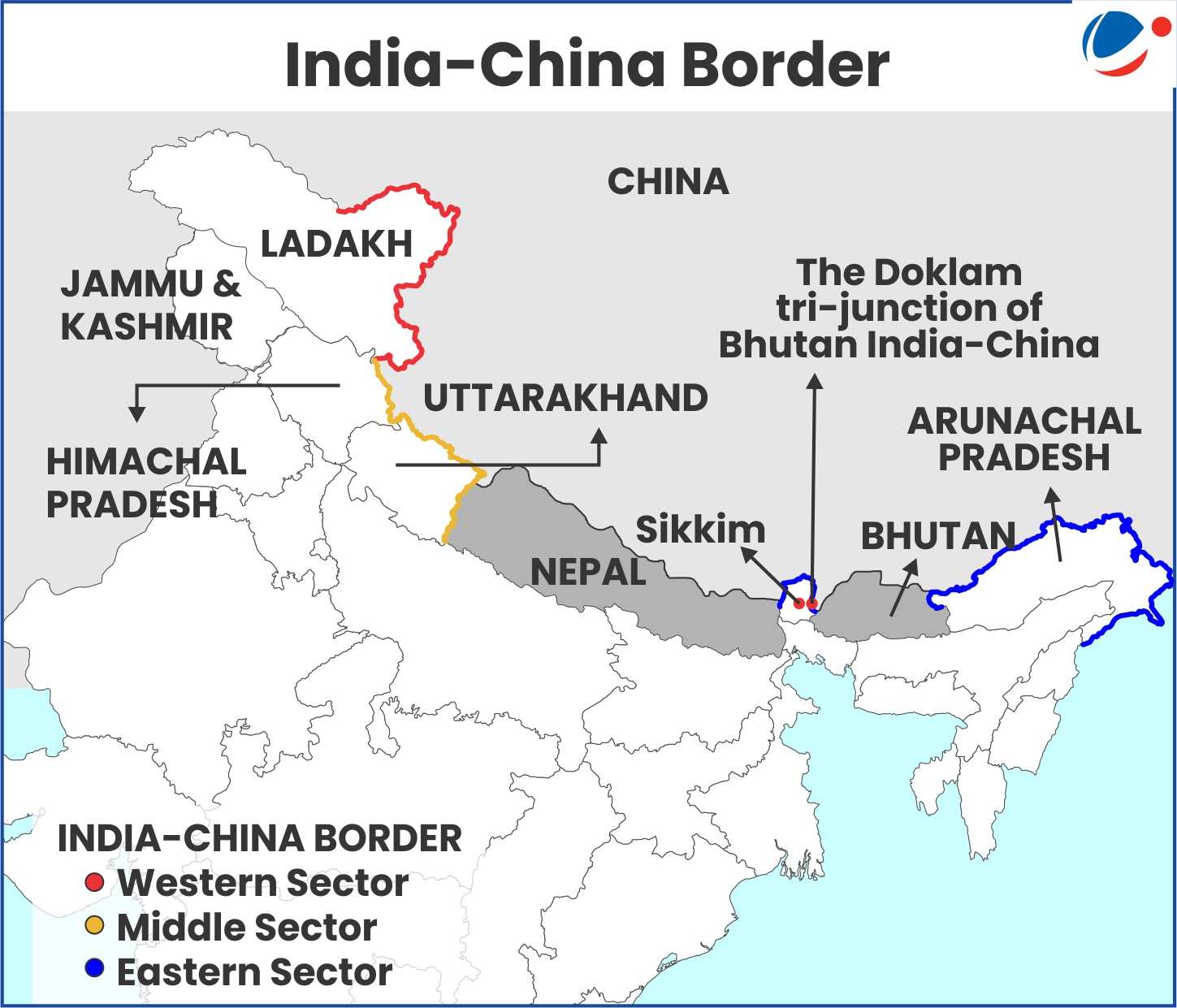Why in the news?
Marking 75 years of diplomatic ties, Chinese President called for a "Dragon-Elephant tango" relations between India and China to symbolize a harmonious partnership between the two nations.
More on the News
- The term "Dragon-Elephant Tango" is a metaphorical phrase used to describe a vision of peaceful and cooperative relations between China and India.
- Dragon represents China (a symbol from Chinese mythology) and Elephant represents India (a culturally significant and strong symbol in Indian heritage).
- Tango (a dance form) symbolizes coordination, harmony, and mutual understanding.
Significance of Stable India–China Relations
- Regional Peace and Stability: Reduces the risk of conflict along the disputed border and contributes to broader stability across South Asia and the Indo-Pacific region.
- De-escalation allows both countries to redirect resources from military buildup towards socio-economic development and other pressing domestic priorities.
- Prosperity and Peace in Indo-Pacific Region: Stable India–China relations are vital for fostering a prosperous and peaceful Indo-Pacific region by reducing strategic tensions and encouraging cooperative development.
- Trade and Investment: A stable relationship fosters a predictable environment for bilateral trade and investments, benefiting various sectors in both economies.
- E.g., China is a major source of Active Pharmaceutical Ingredients (APIs) for India's pharmaceutical industry, and a significant investor in India's startup ecosystem.
- Access to Critical Resources for India: China dominates the production of rare-earth metals, crucial for emerging technologies. Stable ties can ensure India's access to these vital resources.
- India also relies on China for solar modules & cells, essential for its renewable energy goals.
- Global Influence: As major Asian powers, stable India–China ties enable constructive roles in global governance and amplify their influence through joint efforts in multilateral forums like BRICS and SCO.
- Cooperation between India and China can offer a counterweight to Western influence in international affairs, pushing for reforms in institutions like the WTO, IMF, and UN.
- Countering Global Challenges: Stable India–China relations facilitate collaboration on global challenges like climate change, public health, and energy security, while promoting joint action on broader transnational issues.
Key concerns in India-China Relations

- Unsettled Borders: Along the 3,488-kilometer Line of Actual Control (LAC), the lack of mutual agreement between the two countries has led to multiple military clashes.
- The recent clashes include Doklam standoff in 2017 and the Galwan Valley clash in 2020.
- Trade imbalance: India's trade deficit with China rose to USD 85 billion (2023-24) against USD 83.2 billion (2022-23). India is also dependent on China for Semiconductors, Pharma APIs etc.
- Currently, China is the largest trading partner of India with bilateral trade of USD 118.4 billion (2023- 2024).
- China-Pakistan Nexus: India views the China-Pakistan Economic Corridor (CPEC) passing through Pakistan-occupied Kashmir (PoK) as a violation of its sovereignty and territorial integrity.
- China's Assertiveness: Particularly in South Asia through strategies like String of Pearls, presence in Maldives, Sri Lanka, assertion over South China Sea, etc. create insecurities in Indo-Pacific.
- India, meanwhile, is strengthening ties with like-minded nations through platforms like the Quad (India, US, Japan, Australia), seen as a counter to China's assertiveness.
- Water Power: China has control over India's water supply to the northeast region. It has constructed several dams (Zangmu, Dagu, Jiexu, and Jiacha Dams) and can use water as a geo-strategic weapon against India.
Way Forward
- Diplomatic engagements: Maintaining open channels of communication through bilateral or regional cooperation like in BRICS, SCO, etc.
- Both countries are members of BRICS, SCO, G20, and AIIB.
- Building a relationship based on mutual respect and understanding: Both countries need a "durable base" for rebuilding the relations based on a threefold formula of mutual respect, mutual sensitivity and mutual interest.
- Strategic balancing: India must balance strategic caution with engagement, maintaining sovereignty while avoiding unnecessary escalation.
- Water resource management: Enhancing cooperation on sharing hydrological data for Transboundary Rivers and exploring mechanisms for joint management to mitigate potential conflicts.
- Confidence Building Measures (CBMs): Expanding CBMs beyond military interactions to include economic and cultural exchanges in border regions could foster greater trust.
Conclusion
External Affairs Minister of India Dr. S. Jaishankar in his book 'The India Way: Strategies for an Uncertain World' argued that managing China is about realism, agility, and strategic clarity. In this context, it would be prudent for India to pursue a steady course of balancing engagement with deterrence, leveraging global partnerships, and asserting its interests without becoming a proxy in larger power rivalries. In this uncertain world, managing China is not about reaching a final settlement, but about sustaining equilibrium through strength, diplomacy, and foresight— hallmarks of a mature global power.
The String of Pearls
India's Response – "Necklace of Diamonds" strategyA multi-pronged approach often referred to as the "Necklace of Diamonds" strategy, includes –
|





